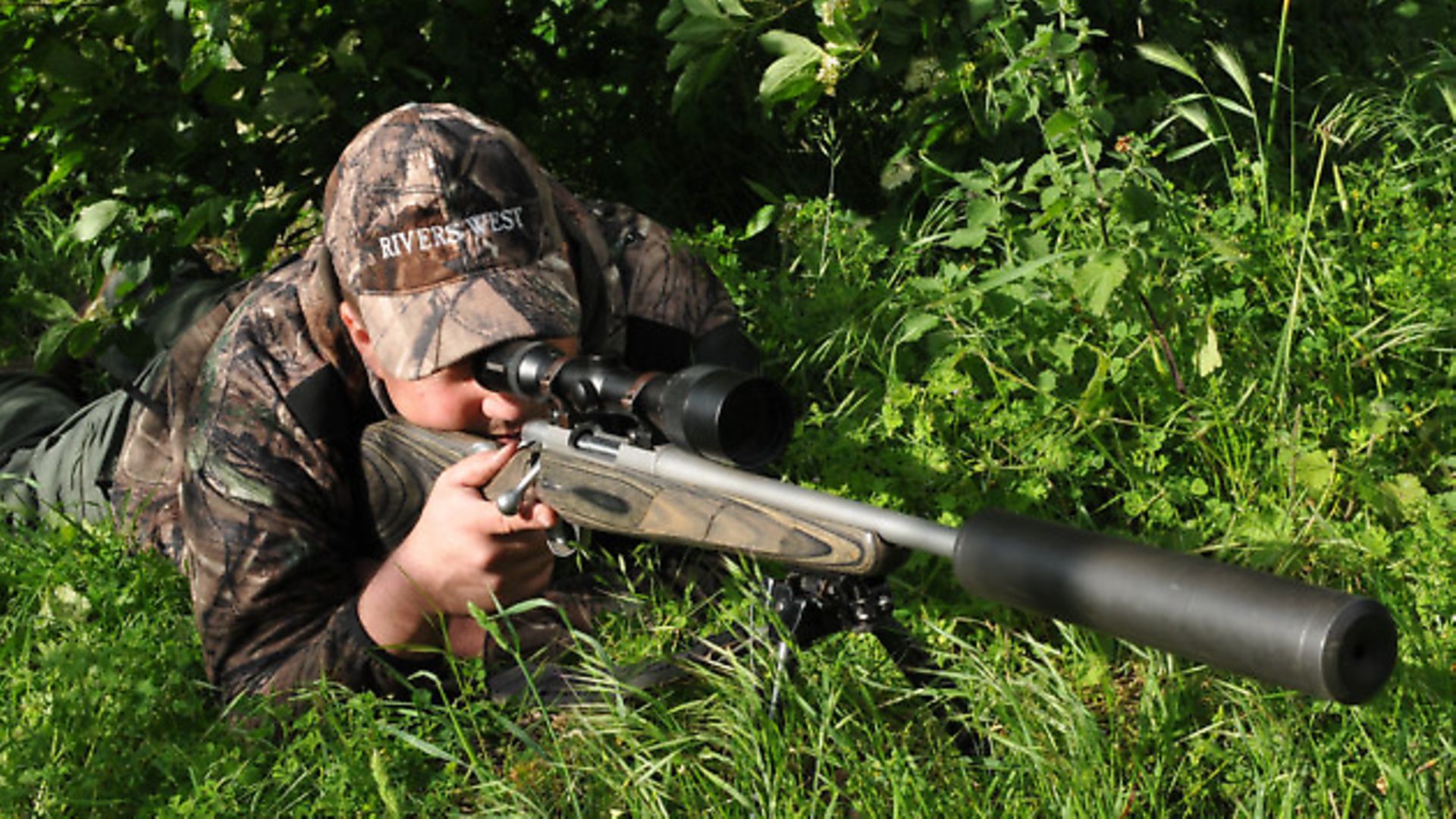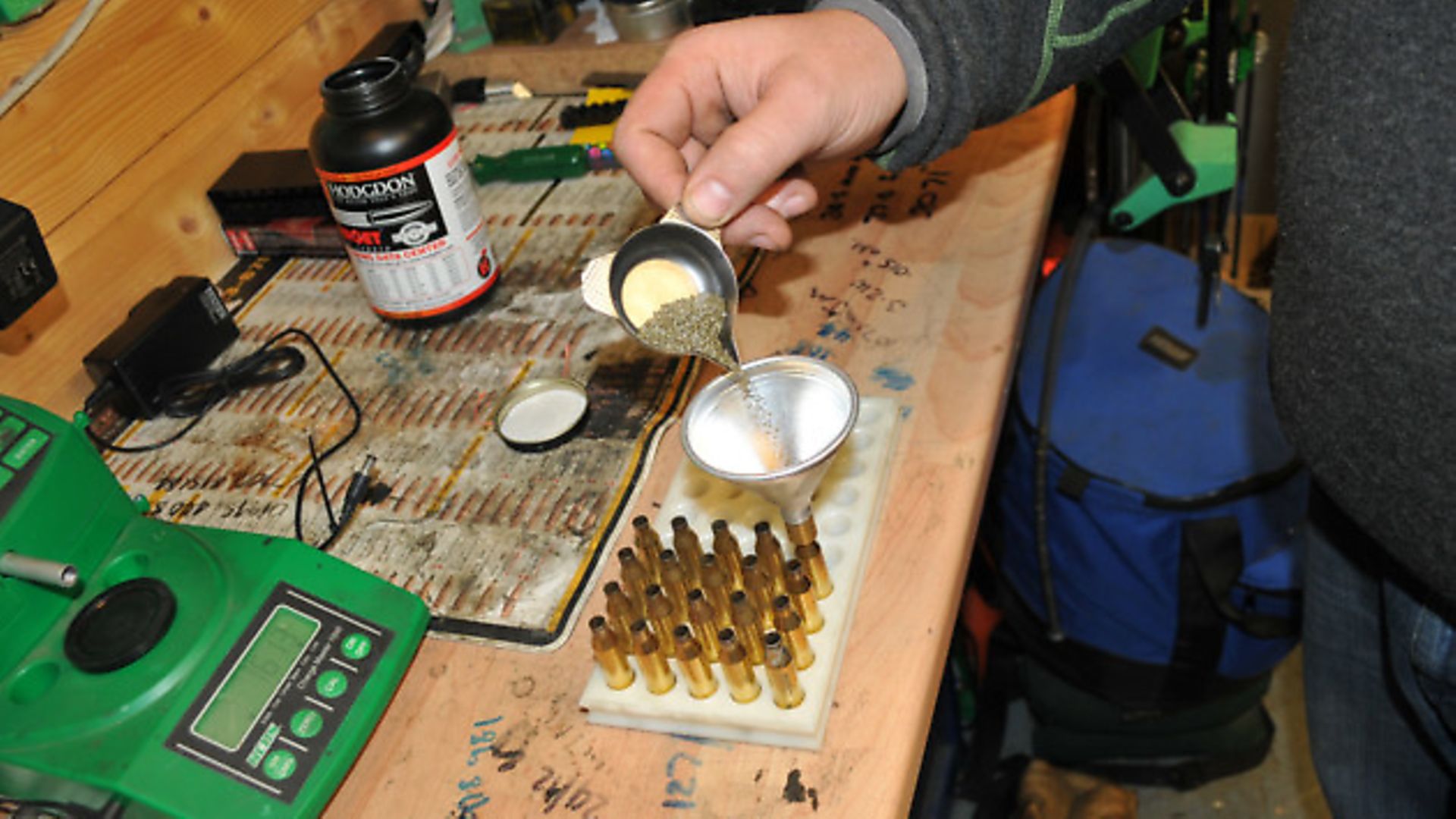Roy Lupton hits back at Dom after an embarrassing photo in the March issue of Sporting Shooter – and talks about foxing calibres, too
 credit: Archant
credit: Archant
In the March issue of Sporting Shooter our editor, and in this case lead photographer, Dom Holtam published a very unflattering photo of me. It caused a barrage of phone calls from sniggering friends, asking if I had done my hair with a whisk and commenting on both my rapidly receding hairline and my rather vacant stare.
 credit: Archant
credit: Archant
Not wanting to allow Dom (or Dim as I like to call him) the chance to further my embarrassment, I decided to do two things in the following issue: one, discuss my favourite foxing calibre, making sure there is no reason to include a photo of me in the magazine; and two: never have anything to do with Dom ever again, especially when he has a camera in his hand.
A lot of people have asked if I have any preference in bullet weight and calibre when it comes to foxing. I suppose I do. The main characteristics I look for in a foxing round are speed and maximum damage on impact. For their size foxes can be incredibly tough, able to take a shot and still run on some distance.
For that reason I prefer the .22-250 for a number of reasons. It offers a relatively flat trajectory and even though I do some home loading, I can easily purchase rounds from most gun shops from a number of good manufacturers if I run out and don’t have the time or inclination to make up some more. Plus the round imparts devastating damage on small to medium sized game at the ranges I am comfortable to shoot.
The range at which we are comfortable taking shots comes down to personal experience and the external factors at the time of the shot. As the majority of my fox shooting occurs during the hours of darkness, I try to limit my range to a maximum of three hundred yards, partly because of the extra time element involved in accurate range finding and subsequent range dialling required past this range. Also, there are additional safety factors to consider, as the illumination of the backstop fades when pushing past this range at night. Obviously if we are out on a particularly windy night then I will not risk taking a longer shot for fear of wounding my target.
The other factor that comes in to play within this range using the .22-250 Hornady V-MAX 50 grain round is the drop off. If my rifle is zeroed at 100 yards I will only have an approximate 7” drop at 300 yards.
Stating that sort of drop-off really has very little meaning unless combining that measurement with the vital statistics of your average Charlie. It can be amazing how foxes can vary in size; take two that I shot and had mounted as examples. One is a vixen holding a stoat in her mouth; she is one of the smallest adult foxes you are likely to find and she has a chest depth of 5.5”. The other is a dog fox, which is one of the largest foxes I have ever shot with a chest depth of almost 9”.
This means that at my maximum 300 yard night shooting range, all I need to do when faced with a fox standing broadside is to simply hold 3.5” above the shoulder. Allowing for a 7” drop, the round should impact the heart of the smallest fox and the lungs of the largest. When we start to push past this range the drop-off dramatically steepens as the round sheds speed and energy, putting pay to an easy solution for a quick hold, unless you are using a mill dot or multi-aim point reticle. I do find it more troublesome at night to get an accurate range on a fox much past 300 yards, which is another reason I limit myself to this range.
If the fox is sitting looking directly at you things become even easier. All I do in this scenario is aim at the top of the fox’s head and the round will either impact his neck or drop in to his chest, both offering a clean and quick end.
Shooting becomes even easier when working back down the ranges with this round. At 250 yards we see a drop-off of 4”, placing my point of aim just hovering over the shoulder. 200 yards gives a drop-off of 1.6”, allowing me to aim just below the spine. For even shorter ranges I allow for a mid-line chest shot.
In all honesty, the majority of foxes can be accounted for quite easily at the shorter ranges, but it is always reassuring to know that if you have practised and are confident to do so, you have this option available to you.
Obviously you can zero your scope at 200 yards or an inch high at 100 yards, allowing for less drop-off at 300 yards. It all comes down to personal choice and shooting style.
I find that after using a scope for some time you become accustomed to the sight picture you expect to see when looking at a fox. After a while, when you put your crosshairs on a fox past this range you instantly pick up that the target does not fill the picture as it should. Yes, it could be a particularly small fox, but within the normal limits you soon get accustomed to your comfort picture and range. I always find it useful when setting up a new rifle scope combination to take out a dead fox during the day, set it up as if it were standing and then view it at different ranges. That way there are no surprises when you look at a live scenario. Alternatively, I use my .243 running a 55 grain Nosler Ballistic Tip with a very similar result.
Unfortunately we have all heard the recent upsetting news of four-week-old Denny Dolan losing a finger after a fox attempted to predate upon him. This incident does not surprise me; as we are all aware, foxes are opportunistic predators. What does surprise me is the vehement denial and horrid accusations that the fox-hugging community are making against the parents. It is a vile bullying tactic that has been previously used against other fox-bite victims and their families.
Once again the blinkered, uneducated views of this particular ignorant group of people astonish me. They seem to find it perfectly acceptable to hand-raise and hand-feed these creatures, not admitting or accepting that they are changing the animal’s behaviour and training them to seek out people and enter their homes in search of food.
We cannot blame the fox for acting in this way. He has become accustomed to us and has lost his inherent fear, so this tragedy is something we are now seeing throughout our towns and cities. He is simply acting as a fox acts and that involves feeding on any animal which he can overpower.
As humans living on our pleasant island with no large predators, we seem to forget or choose to ignore the fact that we evolved as part of the food chain, both predating upon and being predated. I fear that the fox-hugging section of society has become so far removed from the reality of our natural world that they will never be able to accept the reality that they are to blame for this incident.
By Roy Lupton